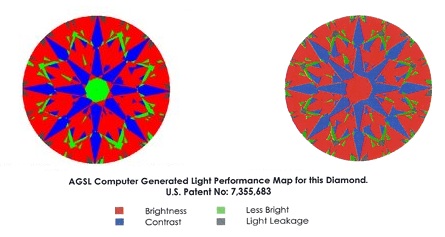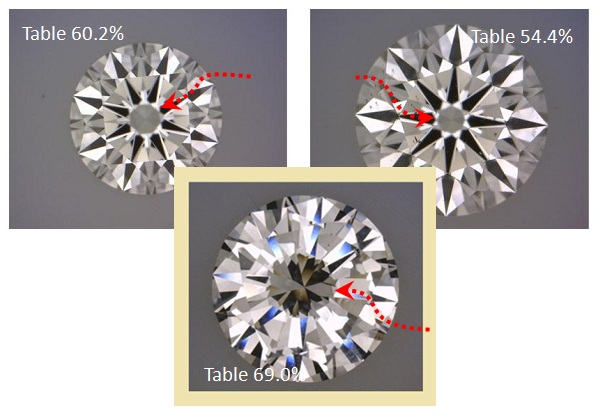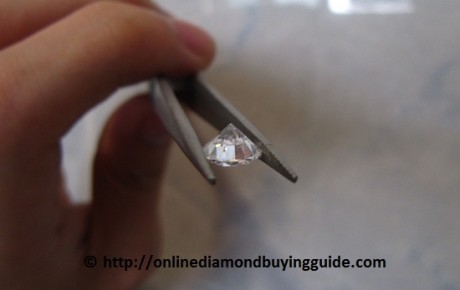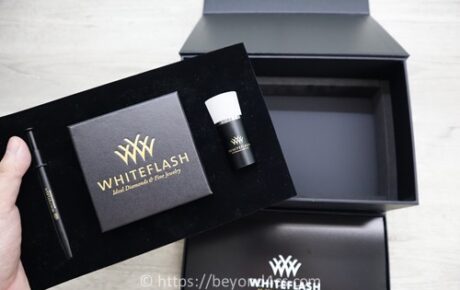Green Or Red in the Middle of ASET Image – Does it Matter?
Today’s Q&A post comes from an observant reader who had some questions about the different colors seen in the center of ASET images.
Question: I was looking at several AGS ideal cut diamonds at WhiteFlash and noticed peculiar things about the AGSL Computer Generated Light Performance Maps.
In some grading reports, the ASET diagrams showed a full green circle in the middle of the diamond and on some others, I noticed they were completely red.

Green or red center in a round brilliant cut diamond? Which is better?
In all of the diamonds I looked at, AGS has graded all of them as triple 0s and that’s the best rating possible. Based on the articles I read on your website, my takeaway is that red is preferable and we want to see more areas in red.
Here are my questions:
- Since the amount of reds would affect light return, shouldn’t the diamond with the green center be graded with a lower cut grade?
- Given that the diamonds are all triple ideal, shouldn’t they look identical? If so, why do they apparently have different light performances.
Answer: First of all, the circular center that you are referring to is actually caused by the reflection of the table facet on the pavilion facets. The size of the table reflection is determined largely by the table size % and the pavilion depth %.

Diamonds with 60.2%, 54.4% and 69.0% table sizes
Technically speaking, the table reflection does not indicate light return or performance since it is a phenomenon caused by reflections in the diamond. And to be very clear, the table % only affects the size of the table reflection and whether it shows up as green or red in the ASET.
The key determinant of a green or red reflection is caused by the steepness of the pavilion angles in conjunction with other facet proportions.
When the pavilion angles are less than 40.7°, you will typically see a green reflection due to the way light is drawn into the diamond. On the other hand, when the pavilion angles are more than 40.8°, the table reflection in the ASET transitions into a red color.
Sometimes, you may even come across a table reflection that shows up as a mixture of red and green when pavilion angles are near the transitioning point.
Now, to answer your questions, the center of the ASET could appear as red, green or a mixture of both colors and that’s still fine. In the case of both triple 0s ideal cut diamonds that you had chosen, the light performance is on-par and appear identical to the untrained eye.
Secondly, diamonds with the same proportions or triple ideal ratings can have differences in appearance and that’s perfectly normal due to variances in ancillary angles like the star facets, lower girdle facets and upper girdle facets.
Related Articles
Leave A Comment











2 Comments
Are there any recommended proportions for selecting great looking round diamonds? I have a budget of around $10000 and would need the ring in 2 weeks time.
You might want to check out my recommended table of proportions for ideal cut rounds here.
– https://beyond4cs.com/shapes/round/ideal-proportions/
In my experience, when round diamonds come within these proportions, they tend to be of a superior cut quality.